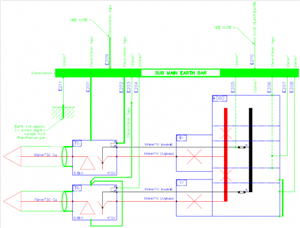Hoping someone can point me in the right direction!
On site we are trying to review our existing distribution earthing arrangements. We have 11kV or 6.6kV distributed to local substations where we drop to 415v locally. We generally have PNB systems with common HV equipment and LV neutral earth arrangements. Typical one shown below

I have reviewed several 'local authority' documents which suggest a maximum of 20ohms for earth rod resistance, but looking through BS EN 7430 it suggests on a similar arrangement in A.2 a maximum of 1 ohms? Could anyone kindly advise what it should be? or point me in the right direction?
Many thanks
Al
